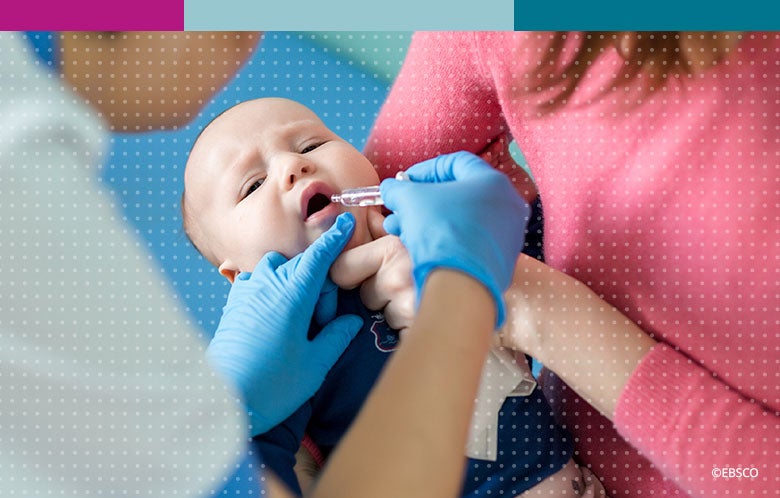Did you know that the first vaccine was developed in the 18th century, when Edward Jenner developed the smallpox vaccine? Other vaccines quickly followed — cholera and rabies (both in 1885), typhoid in 1886, diphtheria in 1923, pertussis in 1939, influenza in 1945, polio in 1960, hepatitis B in 1986, chickenpox in 1996, and human papillomavirus in 2006.
Nurses have played a key role in administering and advocating for vaccines. From the early 20th century, nurses made house calls, educated patients about vaccines, and began staffing immunization clinics. Nurses have also been active in efforts to increase public awareness of vaccines and broaden access to immunization. For example, in 2017, the American Nurses Association (ANA) signed a letter to the American president which discussed vaccine safety and the importance of immunization programs.
Vaccines prevent disease. They do this by kicking the immune system into gear by injecting the same germs that cause the illness, but in an inactivated form. Vaccines don’t cause people to get the illness; instead, they help the body create antibodies that prevent people from getting sick or, if they do get sick, they develop a much milder form of the illness. Because of successful immunization, the World Health Organization (WHO) was able to declare smallpox eradicated in 1980. Similarly, polio was eradicated in the U.S. and Canada in 1994, and in Europe in 2002. And, although measles has not been eradicated, measles infections dropped by 80 percent in the U.S., which may have been a result of vaccination awareness campaigns.
Nurses are in a perfect position to continue to raise awareness and educate the public about vaccines. Nurses spend a significant amount of time with their patients; more time provides nurses with more opportunities to build rapport with patients and identify gaps in their knowledge about vaccines. Vaccine education can be disseminated in many ways, including structured teaching sessions, informal discussions, printed handouts and via the web. No matter which strategy is used, it must be accessible, communicated using simple language, and well-suited to the patient and their preferred way of learning.
More time [with patients] provides nurses with more opportunities to build rapport with patients and identify gaps in their knowledge about vaccines.
More time [with patients] provides nurses with more opportunities to build rapport with patients and identify gaps in their knowledge about vaccines.
Here are a few nurse-directed vaccine education strategies and how to make them successful:
Holding a workshop. Workshops help create structure for educational sessions while providing a casual atmosphere. Ideally, sessions should be brief and followed up with by a question-and-answer session so people can ask questions or voice their concerns. Workshops provide an additional benefit — the speaker can administer a brief pre- and post-teaching questionnaire to assess the attendees’ knowledge before and after the session. This can be useful to assess if the information was delivered clearly and in a way people could remember, and to figure out if different teaching strategies are needed.
Digital content. The internet is a highly effective for teaching about vaccines. The web is readily accessible to more than 85 percent of adults in North America. Most adults and up to half of teens use the internet for health information, and the internet is the second-most common source used by the public for vaccine-related information. Unfortunately, a generic Google search for vaccine information is likely to yield mostly web pages with low quality, inaccurate or outdated information. A better strategy is to provide patients with a direct link or QR code to a website providing accurate current vaccine information. Patient education handouts, like those found in Dynamic Health, are a great way to ensure high-quality, evidenced-based resources.
Face-to-face discussion. Face-to-face teaching about vaccines is a go-to strategy for many nurses. This strategy provides a greater opportunity for nurses to tailor their education to the learner and their specific knowledge gaps. This strategy can also help the person being taught feel less self-conscious about expressing their views or subjects they might feel sensitive about. Face-to-face discussions can be initiated by either the patient or the nurse. Research suggests face-to-face discussions might be most effective when discussing new or optional vaccines, and when teaching patients who lack awareness or basic understanding about an available vaccine, rather than for teaching patients who have a basic understanding but are vaccine hesitant. Shared decision-making tools like DynaMed Decisions provide aids for health care professionals to support conversations with patients.
Nurses have earned the trust and respect of the communities they serve. With so much misinformation about vaccines circulating, nurses are essential to educating the public and correcting the misperceptions people have.



